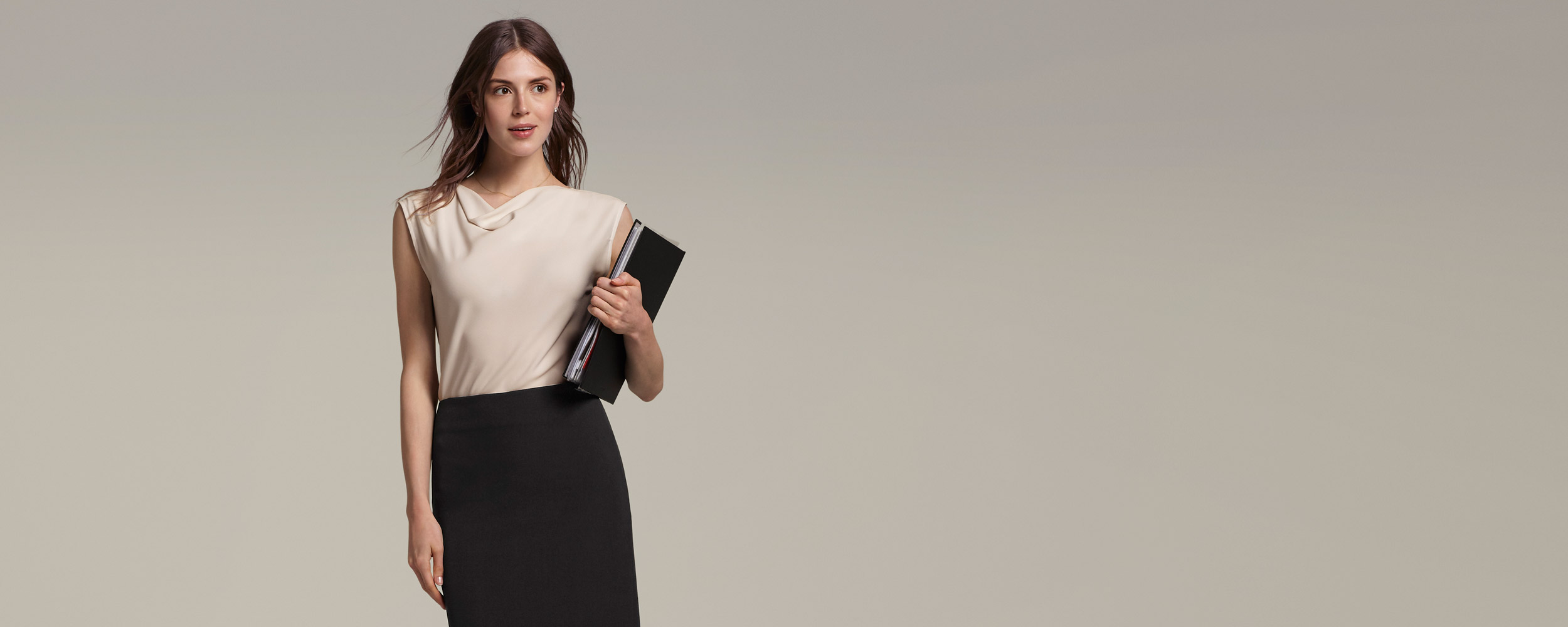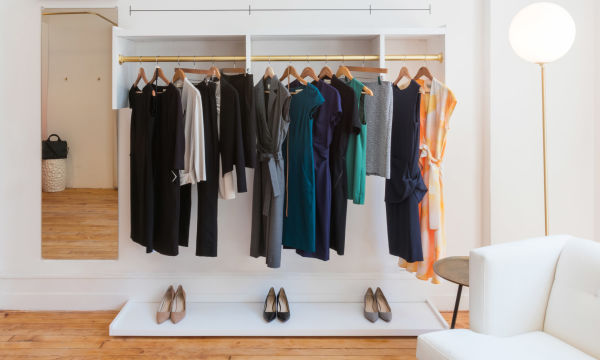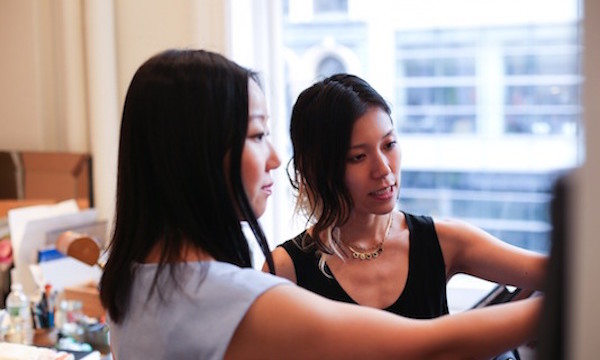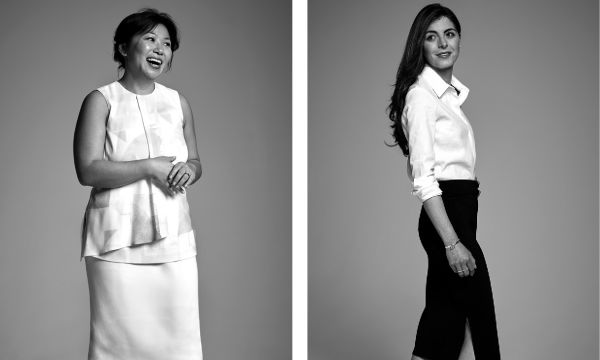Women’s Workwear: The End of the Office Dress Code?
May 25, 2016
In today’s New York Times, fashion critic Vanessa Friedman announces the “end of the office dress code.” It is not a new theory—nor is it an accurate one. To research her article, Friedman paid a visit to the Fashion Institute of Technology’s “Uniformity” exhibit. But I can’t help but wonder: Did she visit any actual offices? Did she speak to any female lawyers, consultants, finance professionals, or executives about how they navigate the concept of a personal uniform? Did she check in with women from Capitol Hill to Wall Street to Silicon Valley? If she did, their on-the-ground insights on women’s workwear are entirely absent from her article.
As part of a team that dwells in the trenches of women’s workwear—we help style thousands of professional women every single day—I’d like to offer a response. But more importantly, I’d like to deepen the cultural conversation about workwear so that we can, once and for all, shift the focus from women’s bodies to their brains, both in the office and beyond. So here we go.
1. Enough about Mark Zuckerberg’s gray T-shirt.
Like many before her, Friedman cites Mark Zuckerberg’s notorious gray T-shirt as proof that professionals are adopting a more casual uniform. Can we move on? Zuckerberg’s shirt of choice is irrelevant to most professional women, especially those working in industries like law and finance, where office environments tend to be more formal. Even women in Silicon Valley find that the casual attire of their male counterparts is not reflective of how they want to dress and be perceived. To wit: Sheryl Sandberg does not show up for work in a gray T-shirt and jeans, but rather, chooses an elegant uniform of tailored dresses and smart separates. Increasingly flexible dress codes do not mean that women will automatically devolve into wearing T-shirts and sweatpants to work. Rather, they mean that women have the flexibility to wear what makes them look and feel good. Today’s workwear lies at the cross section of comfort and elegance, but I don’t know a single woman who wonders “What would Mark Zuckerberg wear?” when planning her outfit for the day. So let’s leave him out of the conversation.
2. When it comes to workwear, you can do away with rules, but there will always be codes.
Friedman references the recent outcry surrounding a British temp agency’s requirement that all of its female employees wear heels. Such rules have no place in the modern workplace, but there will always be norms—often unspoken—about what is appropriate in any given industry. Women learn these codes on the job by observing their superiors and peers. They certainly do not learn them from the fashion media, which regularly steers them wrong. Case in point: the simplistic refrain that “workplaces are becoming more casual.” Which workplaces? How casual? If you show up in a romper to your job at a fashion blog—no problem. But show up in a romper to argue your next case in court? Good luck to you, counselor.
3. The male perspective should not determine what women can and cannot wear at work—but neither should the fashion-industry perspective.
We can all agree: The antiquated assumption that women need to dress a certain way in the workplace so as not to distract their male colleagues is outrageous. It’s 2016, and women can make their own style choices. That said, the fashion industry’s assumption that all women are dying to “express themselves” via clothing misses the mark. Just as there are many women who dislike shopping, there are many women whose means of personal expression are not exclusively linked to their outward appearance. Friedman’s article implies that most women have a Lady Gaga-style meat dress hanging in the back of their closets that they are just dying to wear to work, if only it were acceptable. Not true. In fact, many women just want to dress simply and efficiently (the way men traditionally have) so that they can get on with their actual work. They have #BetterThingsToDo than agonize over their outfits or strive to keep up with industry-dictated trends. For them, true freedom is not about being able to wear whatever they want to work; it is about being able to talk and think about something other than their clothes—especially at the office.
4. The uniform is dead. Long live the uniform!
Friedman begins her article by arguing that “We live in a moment in which the notion of a uniform is increasingly out of fashion, at least when it comes to the implicit codes of professional and public life.” But she concludes with FIT curator Emma McClendon’s lengthy explanation of her own personal uniform (she has a “museum uniform” and a “business uniform”). For McClendon, uniforms “fulfill a need to identify your place in the world.” But she and Friedman miss a more crucial point: Uniforms also serve to create consistency, efficiency, and in some cases, anonymity. In other words, dressing in a streamlined, predictable way turns the conversation away from your clothing. And when it comes to the politicization of women’s bodies in the workplace, it’s high time we shut the conversation down.
5. Professional women already know all this. It’s the media that’s a step behind.
Friedman finishes her article with the condescending advice “to live an examined life when it comes to your wardrobe and your workplace. Because these issues are only going to get more complicated.”
Most working women don’t need this reminder. They’re being examined from all angles on a daily basis. And believe it or not, many have successfully cracked the code and found ways to look and feel polished at work, without compromising their own personal style. After all, looking “professional” and “like yourself” are not necessarily at odds. Why? Because women are professionals. It is not a costume. It is not an act. Sometimes that truth contradicts what the larger fashion industry will have you believe, because most fashion brands underserve (or completely ignore) the professional woman’s reality and her daily needs.
So maybe it is not workplaces or ourselves we should be examining. Maybe it is the fashion industry (including fashion media like the New York Times) and its refusal to recognize professional women as a significant segment of the style-interested community. Dressing for work wouldn’t be such a minefield if more brands would acknowledge that women actually have to dress for work. The professional woman may be too busy to shop, but she has money to spend. Perhaps the real revolution will occur when the fashion industry and the culture at large can acknowledge her as the force that she already is.








